Team Member Spotlight: Orr Fellow Annie Hynes
Getting More with Orr
Annie Hynes’ experience shows how employees, companies and young professionals benefit when Orr Fellows join The Heritage Group.
Getting More with Orr
Annie Hynes’ experience shows how employees, companies and young professionals benefit when Orr Fellows join The Heritage Group.
The story of family and its role in our lives is something that is essential to the entire Heritage family. It’s why we explore this topic with such depth, as well as share our own inspirational stories from all over to remind us how families shape everything about who we are. Our newest employee-inspired video features the Lofton Family – a family who for decades, has embodied what it means to belong to The Heritage Group and Asphalt Materials Families.
Roadway safety is a growing concern in the United States. In 2019 alone, there were 36,096 traffic fatalities, an increase of 5.3% from the year before, according to a recent study conducted by the National Highway Safety Administration (NHTSA).1 Every year, thousands of Americans are injured or killed in preventable accidents, many of them due to distracted driving. Fortunately, the recently enacted Infrastructure Investment and Jobs Act (IIJA), includes several provisions that can make America’s roads safer.
Anyone who travels knows the importance of a smooth, safe driving experience — which is why cracks and potholes can negatively affect that experience. These obstacles can be caused by issues below the surface or a road, but applying the right product to a road can have a much deeper and lasting effect.
The Heritage Group, is a multi-generational family business that spans nearly a century. We take pride in our commitment to foster a supportive and cohesive workplace environment for employees. We strive to ensure that everyone feels supported while working together to create long-term value by doing business the right way!
Nearly a century ago, The Heritage Group was founded on this principle:
“This research helps to confirm the direction the department has taken with recent changes to longitudinal joint specifications.”
– Project Manager Dan Kopacz, WisDOT
How to Create Better Longitudinal Joints?
The longitudinal joint is the Achilles’ heel of every paved road. Road managers know the first part of the pavement to fail is the longitudinal joint. As the road’s most permeable part, this joint is susceptible to the elements, especially with their inherently lower density. Air and water work down through this unavoidable seam in the pavement causing the joint to deteriorate, crack, and pothole. And when the longitudinal joint fails, the rest of the road soon follows — triggering the need for even more maintenance and costly repairs.
Toward Zero Deaths (TZD) is a national initiative to eliminate highway fatalities founded in 2009. The ATSSA Foundation’s mission is to support injured or fallen roadway workers and their families, impacted by roadway work zone crashes. This national strategy on highway safety to advocate for eliminating serious injuries and death on our nation’s roadways was conceptualized by safety practitioners, researchers, advocates, and others from a variety of disciplines. This initiative calls for all stakeholders to champion the idea that one death on our nation’s roadways is too many, and we must all work together to bring the annual number of roadway deaths to zero. With this input of over 70 workshop participants and further discussions with the Steering Committee following the workshop, the name of this effort became “Toward Zero Deaths: A National Strategy on Highway Safety.”
Frequent donator, Minnesota-based company 3M raised more than $15k this year partnering with The ATSS Foundation by operating the zero deaths pledge wall from the start of the year through ATSSA’s 52nd Annual Convention & Traffic Expo. The company offered to match donations up to $5,000 and most of the raised funds came in during the final days of the Expo. “As the new ATSS Foundation Chair, I can’t express enough how grateful I am for support from companies like 3M that share the vision with us to help families that have experienced such horrific work zone tragedies,” said Kevin Shelton. For more information on how to promote traffic safety culture in your community, visit the TZD webpage for a list of initiatives you can implement today.
Honoring those who died in work zones with a traveling & virtual memorial, The ATSSA Foundation offers the National Work Zone Memorial, honoring lives lost in work zones to help make fatalities “real” to policy makers and drivers. Originally unveiled in April 2002, “The National Work Zone Memorial – Respect and Remembrance: Reflections of Life on the Road” program is a living tribute to the memory of lives lost in work zones2. The new design of the traveling National Work Zone Memorial was unveiled in February 2017.
The traditional Memorial travels to communities across the cross each year to raise awareness of the need to respect and stay safe in America’s roadway work zones. A virtual National Work Zone Memorial is also available for meetings and events and is open to anyone interested in increasing roadway safety awareness and is now available at no cost. The Foundation encourages ATSSA members, ATSSA chapters, state DOTs and industry leaders to host the Memorial at your next event. To apply to host the Memorial at your next event, or to submit a name for the memorial, visit ATSSA webpage for more information.
A work zone tragedy shouldn’t mean the end of the dreams and aspirations for the worker’s spouse, children, and family. This is exactly why The ATSS Foundation created The Roadway Worker Memorial Scholarship Program. This program provides financial assistance for post-high school education to the children or spouse of a roadway worker killed or permanently disabled in a work zone incident. The scholarships, offered by The American Traffic Safety Services (ATSS) Foundation3, can help put the worker’s dependents on the road to a brilliant future. The scholarships are competitive and have a value up to $10,000. Applicants who demonstrate a strong commitment to volunteerism may be eligible to receive an additional $1,000 in honor of Chuck Bailey, an esteemed member of the roadway safety industry from Ohio who died in 2002 as a result of a work zone incident.
The Roadway Worker Memorial Scholarship Program celebrates its 20th anniversary this year and has awarded $358,000 since its inception. Thirteen students are currently attending college thanks to a Roadway Worker Memorial Scholarship. Two of those also received a Chuck Bailey Memorial Scholarship for this school year. Hear from Roadway Worker Memorial Scholarship recipients about how The ATSS Foundation scholarships helped them achieve their dreams.
“It is a privilege to help the dependents of fallen or permanently injured roadway workers pursue their goals,” said Foundation Director Lori Diaz. “But we couldn’t offer these scholarships without the generosity of individual donors, ATSSA members and sponsors of the events we hold throughout the year.” The ATSS Foundation is the charitable arm of ATSSA and was formed in 1988 with the core purpose to promote roadway safety through charitable giving and public awareness programs. Donations can be made at Foundation.ATSSA.com/Donate.
In March of 2019, the National Lieutenant Governors Association (NLGA)4 passed a resolution recognizing April 8 – 12 2019 as National Work Zone Awareness Week. The resolution was passed at the NLGA 2019 Federal-State Relations Meeting where the lieutenant governors discussed state, federal, and international affairs. ATSSA’s Government Relations staff members were in attendance and requested the resolution be considered by NLGA. The NLGA is a professional association for the elected officials first in line of succession to governors in all 50 states and five U.S. territories. Their goal? The NLGA strives for efficiency in state government by providing professional support, to foster interstate cooperation, and to generally improve the efficiency of state and territorial administration through education on issues and leadership training. “ATSSA is pleased that the Lt. Governors passed a resolution acknowledging the importance of work zone safety awareness as we begin the spring construction season. Public awareness is key in helping to remind motorists to be mindful when navigating work zones,” said ATSSA’s Director of State Government Relations Ashley Wieland.

1 https://www.towardzerodeaths.org/
2 https://foundation.atssa.com/Programs/National-Work-Zone-Memorial
3 https://foundation.atssa.com/Programs/Roadway-Worker-Memorial-Scholarship-Program
4 https://nlga.us/
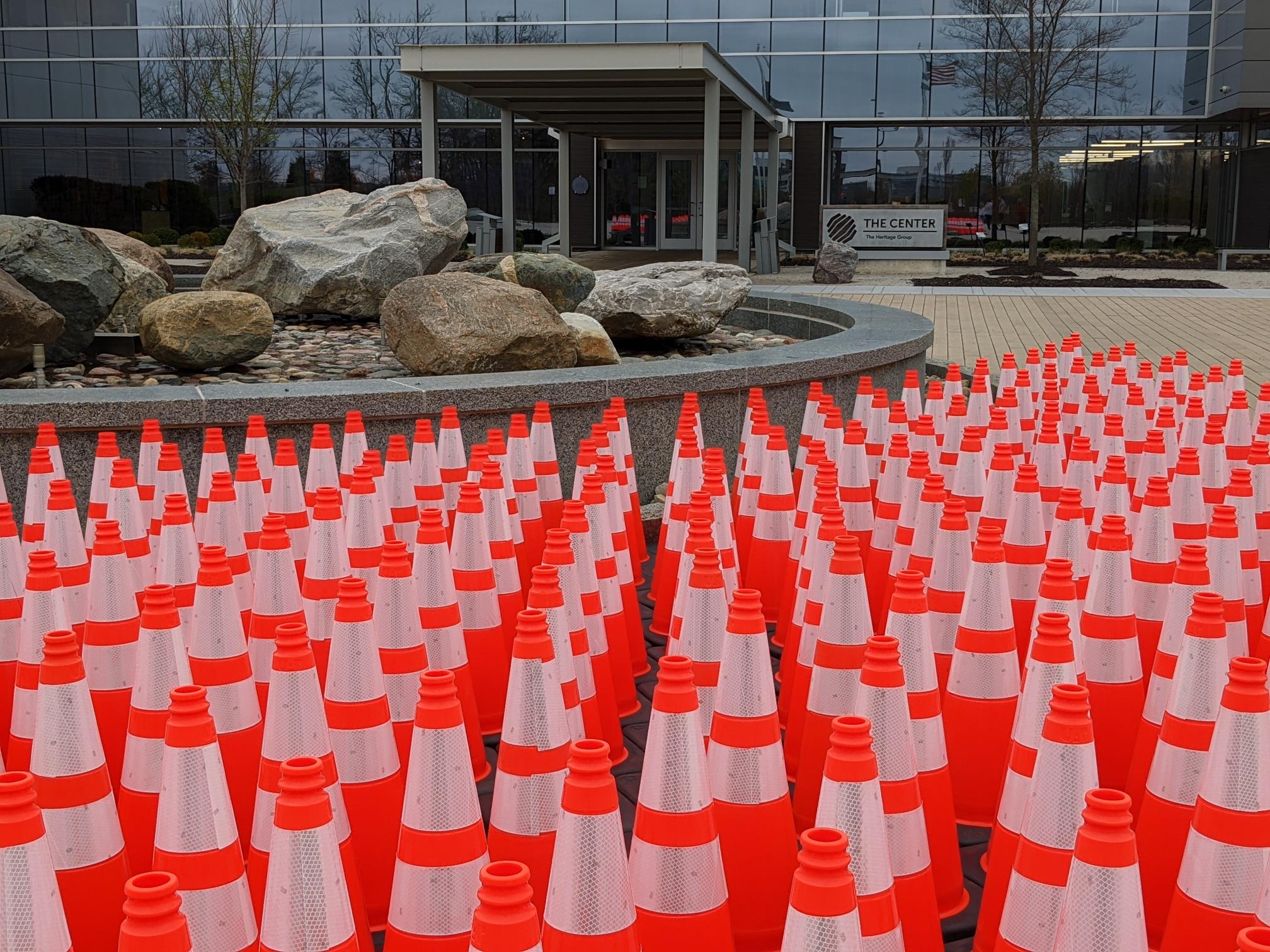
Roadway construction season has arrived! Construction zones are often full of obstacles and potential hazards, so it is important to stay alert and follow all posted signs and instructions. As we all know, roadway construction is a necessary part of keeping our roads safe and maintained. By being aware, alert and focused on driving and not being distracted, we can all help to make the construction season safer for everyone.
Spring is finally here, and that means construction season is underway! As we all know, construction zones can be extremely dangerous places for both drivers and workers. That’s exactly why the Virginia Department of Transportation (VDOT) hosts its annual National Work Zone Awareness Week (NWZAW), this year from April 11-15. The weeklong campaign is designed to raise awareness of the dangers of work zones and encourage drivers to use extra caution when driving through any.
Asphalt paving is a complex process that requires in-depth planning, precision, and specialized expertise. When it comes to paving with asphalt, everyone always looks forward to the end result – i.e., long-lasting and functional pavement. Beyond the numerous techniques and skillset required to completing asphalt paving projects, if you don’t have a solid foundation for your final product, your work will deteriorate quickly.
However, when important steps are neglected, roads can be in a vulnerable condition, susceptible to quicker deterioration such as premature cracking and the all too familiar and frustrating potholes. A recent article published by The Asphalt Magazine introduces five key points which, when followed, can lead to stronger, durable, longer lasting asphalt pavements.
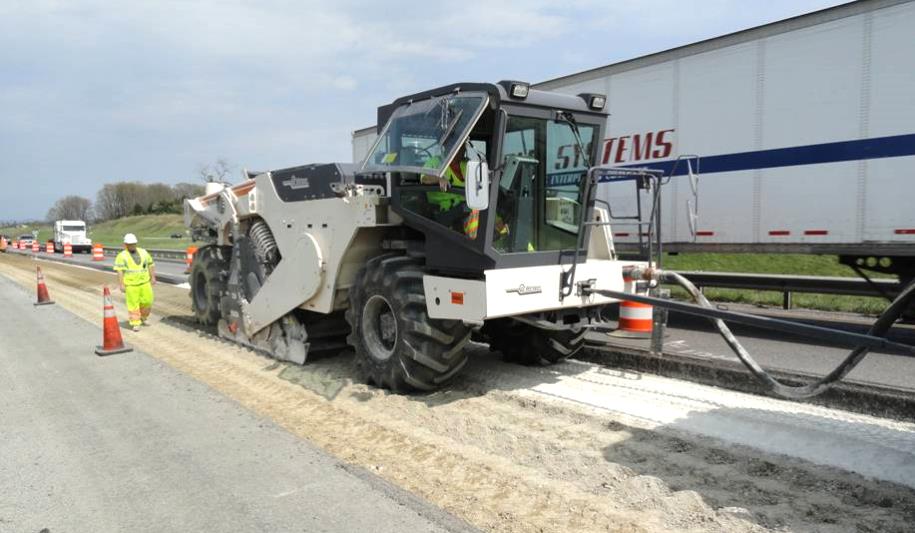
Achieving the highest level of asphalt pavement performance is often the top goal for both clients and contractors alike. In his article, “The five keys to paving success,” Dave Johnson, P.E., emphasizes the importance of considering these factors to never overlook when building high-quality pavements and avoiding poorer-than-optimal performance.
As an engineer and asphalt paving contractor, Johnson has seen his share of bad asphalt surface streets over the years – those with inadequate design and construction factors that lead to poor performance. In his years of experience specializing in asphalt pavements, he has witnessed countless asphalt paving projects – some that have lasted for decades and others that have failed within the first few years. While there is no one formula to ensure the development of a high-quality, long-lasting asphalt pavement, the five keys to doing so, according to Johnson, are these:
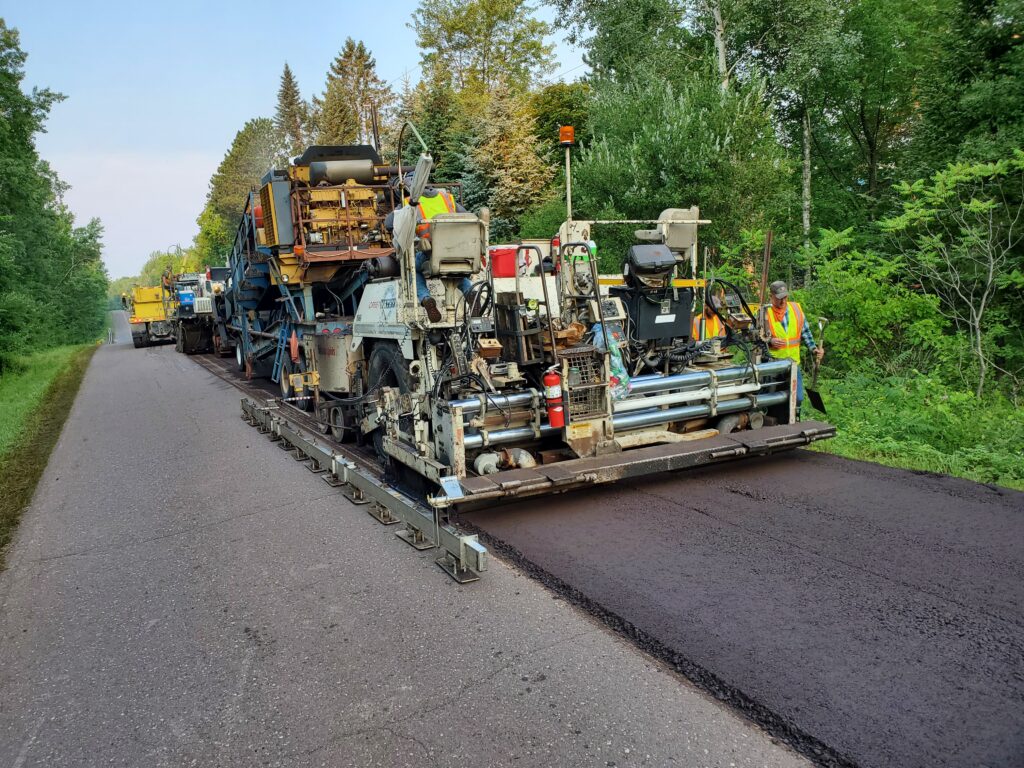
Asphalt mix design, mix temperature, placement thickness, aggregate angularity and compaction are crucial to consider when producing a quality pavement. Each of these five keys is important in its own right, but they all work together to create a strong foundation. Asphalt pavement is renowned for its durability, longevity, and cost-effectiveness, but proper construction is critical to achieving these characteristics.
After all, asphalt is the most heavily used construction material in America. “All too often, contractors compromise some or all of these factors in the name of saving time and money,” Johnson explains. “They later discover that short-term savings were far outweighed by the longer-term costs associated with poor performance.” While all five aspects of a top-notch pavement are equally important and work together to create a high-quality product, paving is rarely an exact science.
Conditions such as climate, temperature, traffic, etc. can vary greatly from one work site to the next. These procedures cannot be ignored if you want to ensure longevity and stability in your asphalt pavement, preventing you from having to make costly repairs sooner than later.
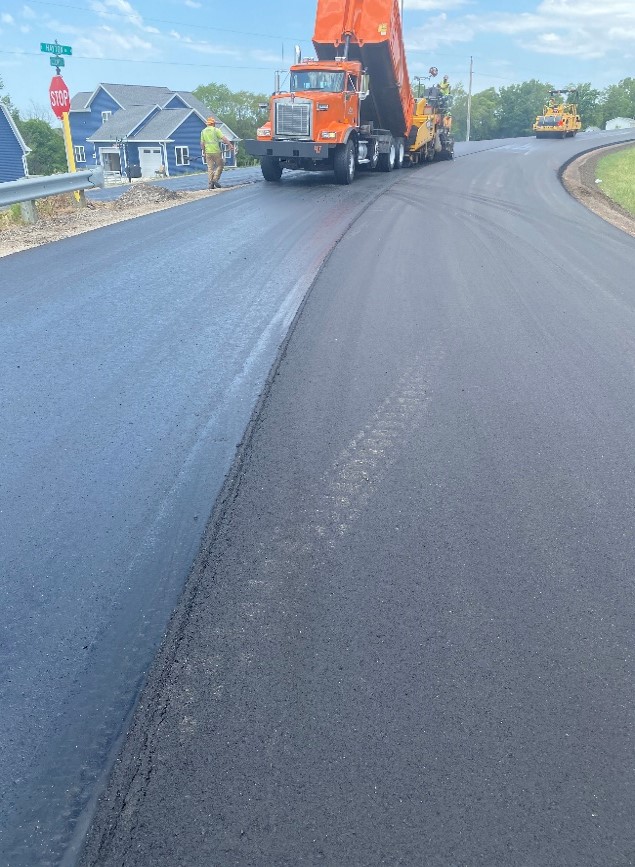
The asphalt pavement industry also presents challenges because there are often frequent changes to specifications. By taking the time to ensure each of these five keys is up to par in your project, you can avoid costly mistakes and deliver a high-quality, long-lasting asphalt pavement. While paving is not an exact science, there’s still much that can go wrong if you don’t take the time necessary with each key component from start through completion.
It is an overall complex and sensitive process – one that should not be taken lightly. Neglecting even one of them results in a subpar final product. Be sure to keep these five keys in mind on your next asphalt paving project! Your clients, community, and bank account will thank you in the long run.
For more detailed information on each key and how to achieve success, read more about Johnson’s insights on building better asphalt surfaces here. >>>
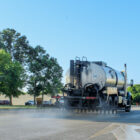
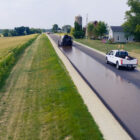

Recent Comments